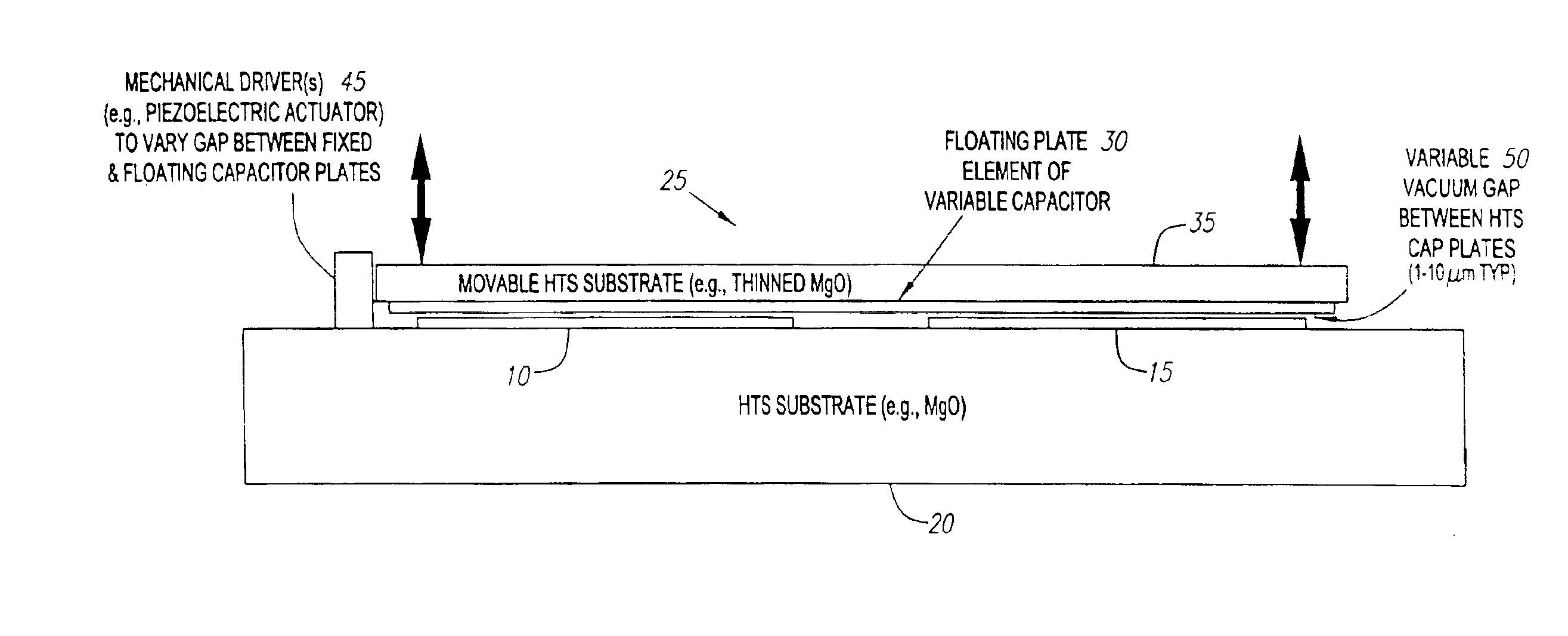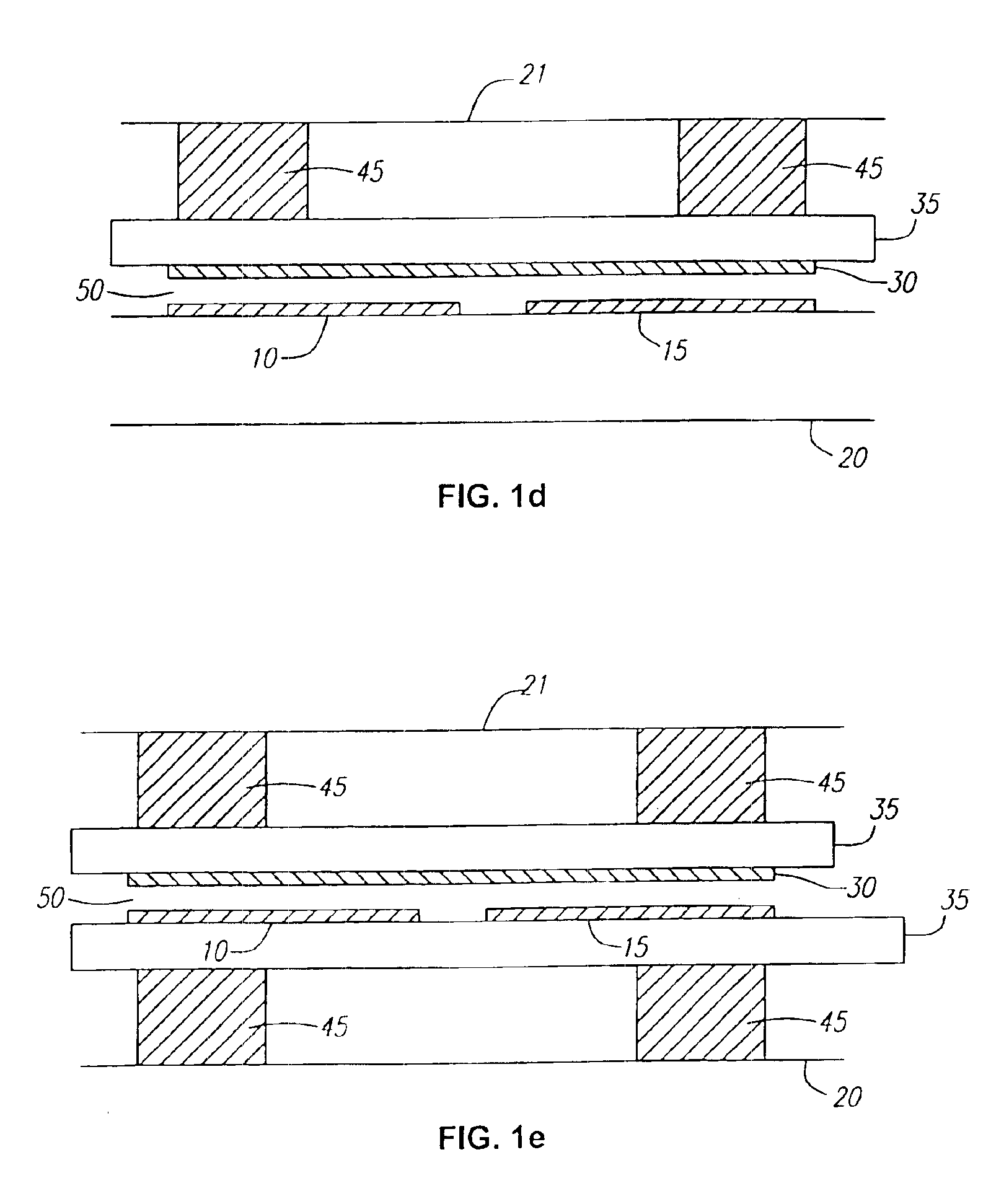High temperature superconducting tunable filter with an adjustable capacitance gap
a capacitance gap and superconducting technology, applied in the direction of superconductors/hyperconductors, variable capacitor structure combinations, resonance circuit tuning, etc., can solve the problems of radar warning systems that are often completely unusable, lumped element and distributed element filters suffer from these and other problems, and achieve low microphonics. , the effect of high speed
- Summary
- Abstract
- Description
- Claims
- Application Information
AI Technical Summary
Benefits of technology
Problems solved by technology
Method used
Image
Examples
Embodiment Construction
[0035]Turning now to FIGS. 1a and 1b, a preferred embodiment for a high-Q bandpass filter resonator based on a MEMS-like HTS split-plate variable capacitor with independent mechanical actuation is illustrated. A first fixed plate 10 and a second fixed plate 15 are patterned from thin-film HTS material (e.g., YBCO) grown on a fixed substrate 20 (see, e.g., FIG. 1a) comprising, for example, MgO. Such epitaxial superconductive thin films are now routinely formed and commercially available. See, e.g., R. B. Hammond, et al., “Epitaxial Tl2Ca1Ba2Cu2O8 Thin Films With Low 9.6 GHz Surface Resistance at High Power and Above 77K,” Appl. Phy. Lett., Vol. 57, pp. 825-27, 1990. The variable capacitor structure 25 is completed by the addition of a floating plate 30 (drawn transparent in the plan view in FIG. 1b) patterned from thin-film HTS material grown on a movable substrate 35 (see, e.g., FIG. 1a) comprising, for example, MgO. Floating plate 30 is spaced apart and substantially parallel to fi...
PUM
 Login to View More
Login to View More Abstract
Description
Claims
Application Information
 Login to View More
Login to View More - R&D
- Intellectual Property
- Life Sciences
- Materials
- Tech Scout
- Unparalleled Data Quality
- Higher Quality Content
- 60% Fewer Hallucinations
Browse by: Latest US Patents, China's latest patents, Technical Efficacy Thesaurus, Application Domain, Technology Topic, Popular Technical Reports.
© 2025 PatSnap. All rights reserved.Legal|Privacy policy|Modern Slavery Act Transparency Statement|Sitemap|About US| Contact US: help@patsnap.com



